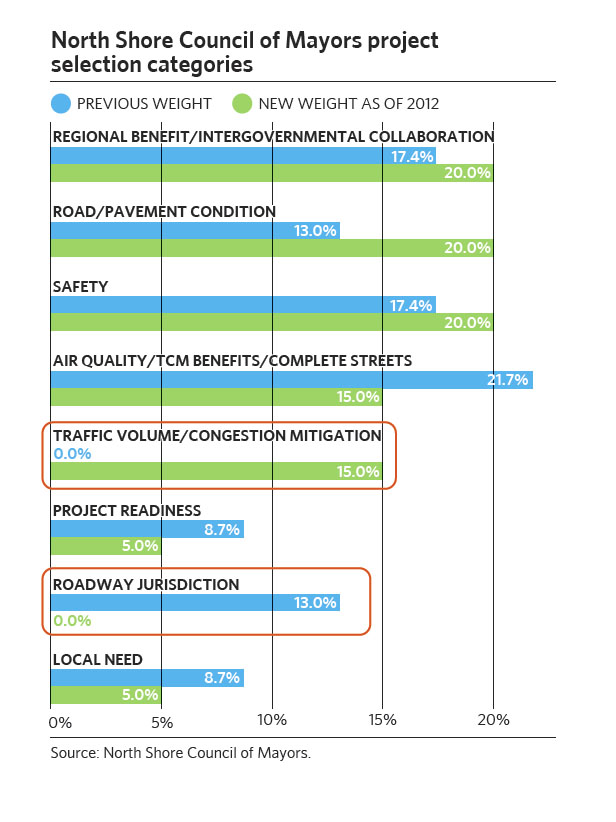On September 17-18, 2012, CMAP hosted a peer exchange of transportation implementers from across the region to discuss their agencies' approaches to capital programming. Participating agencies included the Illinois Department of Transportation (IDOT) District 1, Illinois Tollway, county transportation departments, North Shore Council of Mayors, CMAP, City of Chicago, City of Naperville, Regional Transportation Authority, Chicago Transportation Authority, Metra, and Pace. The presentations from the peer exchange are available from CMAP's FTP website, ftp://ftp.cmap.illinois.gov/Regional_Peer_Exchange/. The public login name is "cmapftpro" and the password is "CMAPread2013."
The transportation agencies described a variety of approaches to capital programming. Some use formal systems to score and rank projects for policymakers' deliberation, while others employ a more ad hoc approach that relies on staff experience and judgment. Common themes across agencies included the importance of collaborating across jurisdictions, leveraging scarce funds, emphasizing multimodalism, and expanding public outreach. The agencies also stressed the need for data-driven decisions and noted that such data is more readily available for certain criteria (e.g., bridge and pavement conditions) than others (e.g., economic impacts).
This Policy Update focuses on the North Shore Council of Mayors' performance-based programming as a best practice example. The North Shore Council of Mayors is one of 11 suburban subregional councils charged with allocating local Surface Transportation Program (STP) funds. CMAP has compiled the Councils' STP methodologies and an overview of each Council's overall funding parameters.
Like the other subregional councils, the North Shore Council of Mayors runs a competitive application process to program its STP funds. The Council defines seven project selection categories, each of which represents a formal weight in any project's overall score. Points for each category are determined based on explicit, objective criteria. For example, safety points, which represent 20 percent of the overall weight, are based on the number of vehicular crashes (5 points), pedestrian crashes (5 points), bicycle crashes (5 points), and crash severity (5 points). The Council recently updated its scoring methodology, placing more emphasis on regional benefits, intergovernmental collaboration, pavement conditions, safety, traffic volumes, and congestion mitigation. These reforms in turn de-emphasized other criteria such as local need, roadway jurisdiction (the entity responsible for the road), project readiness, and air-quality benefits. The following chart compares the previous and current weights across evaluation criteria.

Note that "TCM" refers to "Traffic Control Measures." The red boxes refer to criteria added to or dropped from the evaluation methodology. Click image for larger version.
The quantitative scoring described above does not determine the Council's final program. Rather, it informs decision making, with initial review and recommendations from the Council's Technical Committee and final review and approval from the full Council. This combination of data-driven scoring, transparent processes, and public deliberation represents performance-based programming as envisioned by CMAP.
Performance-based programming is a high priority for CMAP. GO TO 2040 recommends that transportation funding decisions be based on transparent evaluation criteria and that IDOT and the region's transportation stakeholders develop and use necessary performance measures.(A previous Policy Update untangles the definitions of "performance measures" and "performance-based funding.")
The September regional peer exchange builds on the momentum of a related event last summer that focused on performance-based transportation funding among state DOTs and metropolitan planning organizations. On July 10-11, 2012, CMAP hosted a peer exchange event through U.S. DOT Transportation Planning Capacity Building program. CMAP identified five key takeaways from the participating agencies: transparency, DOT-MPO relationship, de-politicization of the process, incremental implementation, and a "bucket approach" to developing measures and targets.